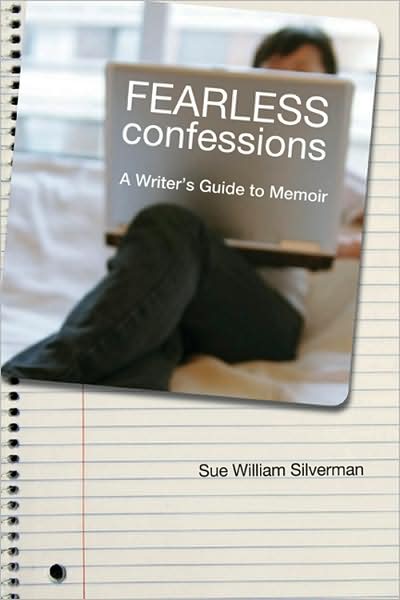University of Georgia, 2009
 In her book about memoir writing, Sue William Silverman begins by showing us what not to do. She takes us to the beginning of her career, as she’s sitting in writing class, facing an instructor holding up a magnolia blossom and saying, “Describe this.”
In her book about memoir writing, Sue William Silverman begins by showing us what not to do. She takes us to the beginning of her career, as she’s sitting in writing class, facing an instructor holding up a magnolia blossom and saying, “Describe this.”
Silverman complies by writing, “The flower is white, the petals are soft, the blossom smells like perfume.”
“Unoriginal,” the instructor tells her.
Then the instructor tells the class to write using all five senses. Silverman jots down a paragraph about a homeless man. Most of her sentences sound rather predictable, but this one line stands out: “Sunrays clanged in his ears.” Clanged? Odd, until you realize that this man is hungover. This verb not only makes us sit up and pay attention, but deepens our understanding of this character.
Silverman shows us in Fearless Confessions how this one line changed her writing. In it, she saw how authentic details shape tone, theme, and voice, “[It] taught me one of the most valuable lessons of creative writing: how external sensory imagery is crafted– slanted– to create mood and emotion,” she writes.
This is huge– or at least it strikes me as huge– after working with my own top-of-the-head-thinkers, who don’t stretch very far to find “good,” “pretty,” and “interesting” to use as their vivid details. Silverman’s examples show how specifics and fresh ideas convert tired, trite paragraphs into ones that excite and enchant.
Throughout this book, Silverman courageously shares her own writing mistakes, which earns her even more respect in my mind. The reality is that all writers struggle, at least sometimes, to find the right words or create fresh, energetic phrases. Silverman excels at candidness, a skill she learned long ago when she wrote about sexual abuse, Because I Remember Terror, Father, I Remember You, and sexual addiction, Love Sick: One Woman’s Journey Through Sexual Addiction. Her honesty turns her into a trustworthy guide and friendly mentor.
One of my favorite sections of this book is chapter five, expanded from a craft essay Silverman wrote five years ago for Brevity, Innocence and Experience: Voice in Creative Nonfiction. Here she pulls back the curtain, exposing the “voice” that turns the self-indulgent memoir into a page turner. It’s not enough just to find the right voice, Silverman points out. The memoirist really needs to juggle several voices, namely innocence (the time of the narrative) and experience (the wizened self looking back). I’ve shared this idea with memoir students, who either stare at me blankly as if I’m speaking Swahili or bolt upright as if I’d just handed them that long sought-after puzzle piece. I’ve never read (or heard) about this memoir technique anywhere else, but Silverman not only explains it, but illustrates it with clear examples.
I’ve shared some of Silverman’s tips and exercises with my students. They’re fun, insightful, and helpful in skill building– adaptable to all forms of creative writing. But what’s great about this book is that Silverman’s writing bears the same characteristics as in her memoir writing– honest and fearless. It’s an example that want-to-be memoirists should not only study, but follow.
—
Debbie Hagan is writing instructor at New Hampshire Institute of Art and editor-in-chief of Art New England. She is also Brevity’s book review editor.
